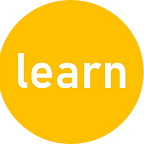One of the most convincing arguments in favour of using blended learning is that you get to offer your learners an abundance of supplemental resources. Both blended learning and flipped classroom offer their fair share of benefits. However, choosing any greatly depends on the learning objectives and the needs of your learners as well as the resources available.
Lets explore how the two approaches work :
Blended learning involves online and face-to-face instruction. They are used alongside each other in order to provide a comprehensive learning experience. To put this into perspective, a trainer might give learners a list of online resources they can use to broaden their understanding of the topic, or ask them to complete an online group project that centers on a topic they are currently discussing .
On the other hand, flipped learning also known as flipped classroom is a bit clear cut , there is a divide between the technology and face to face elements of the learning experience. , a learner is asked to watch an e — learning video or participate in another online learning exercise BEFORE coming to class . In most cases the knowledge that is acquired online is applied in the classroom.
A teacher needs to understand both approaches to know which suits their teaching style. Blended learning offers a fluid combination of online resources and face-to-face teaching, resulting in a customised learning experience. While flipped learning is a bit more rigid, learners use online resources (notes, video lectures) to grasp concepts and then apply this knowledge in the classroom.
The key differences between a blended learning model and flipped classroom are not fundamental to making one superior over the other, both methods are effective and each has its pros and cons. The best approach depends on your goals and the type of student you teach.
